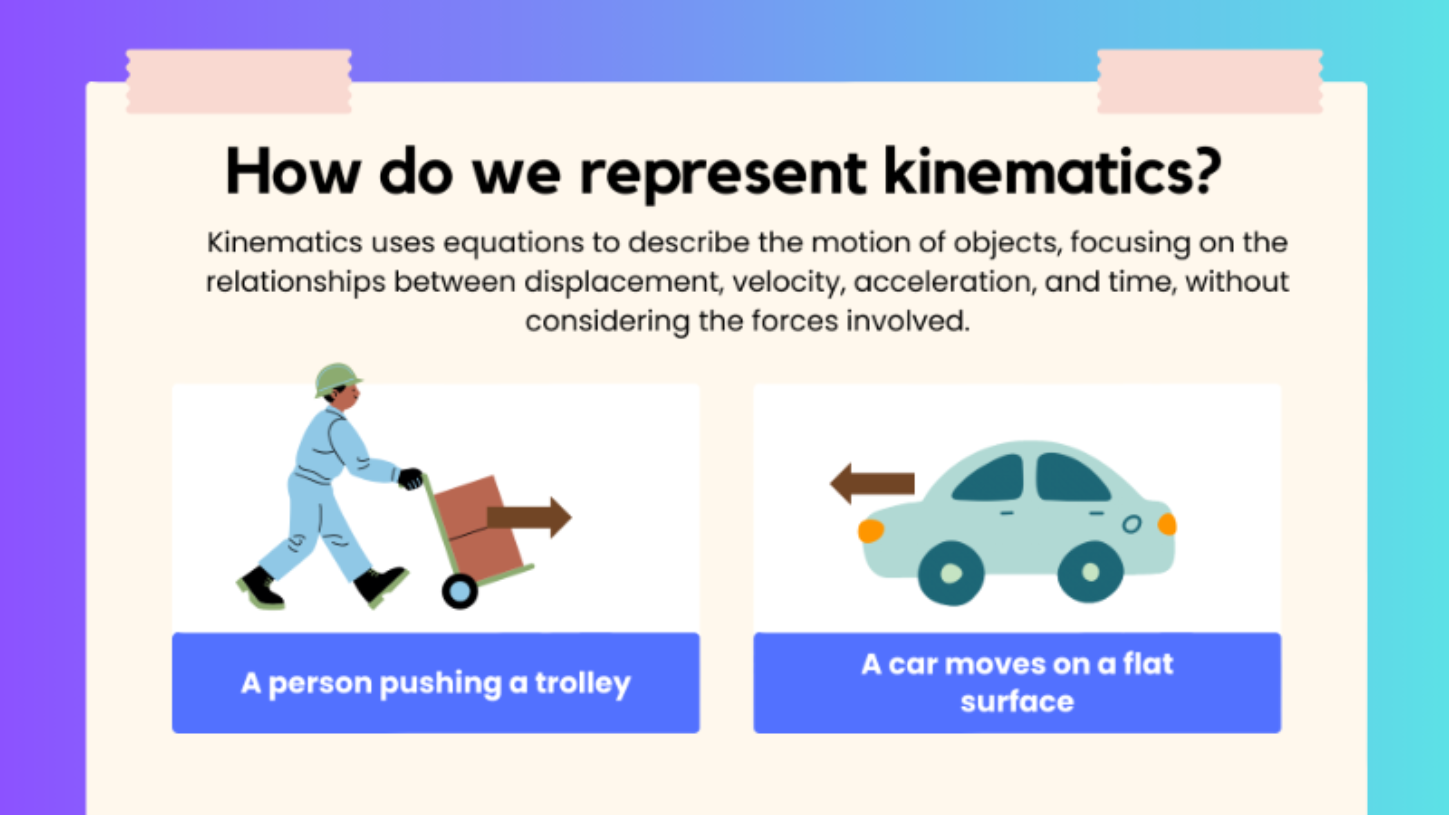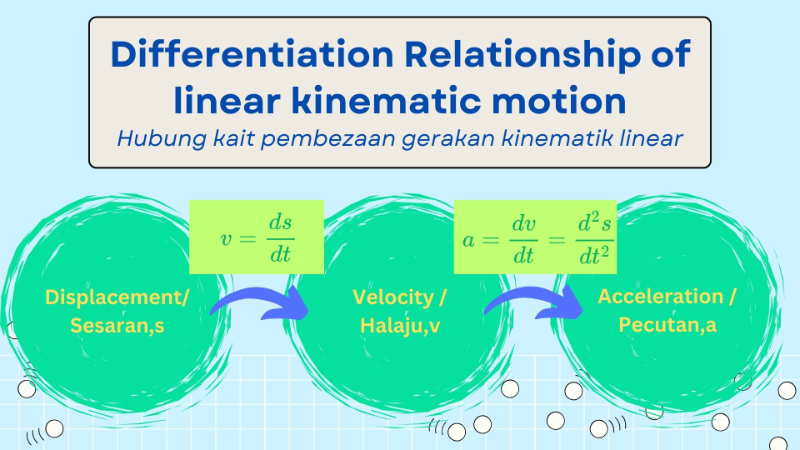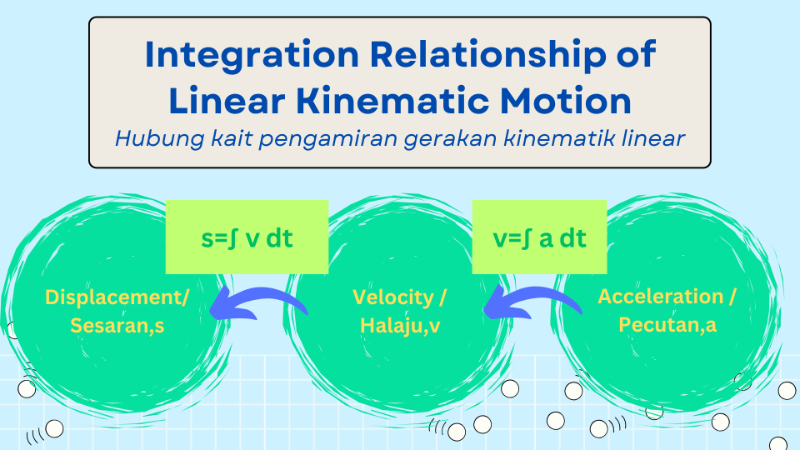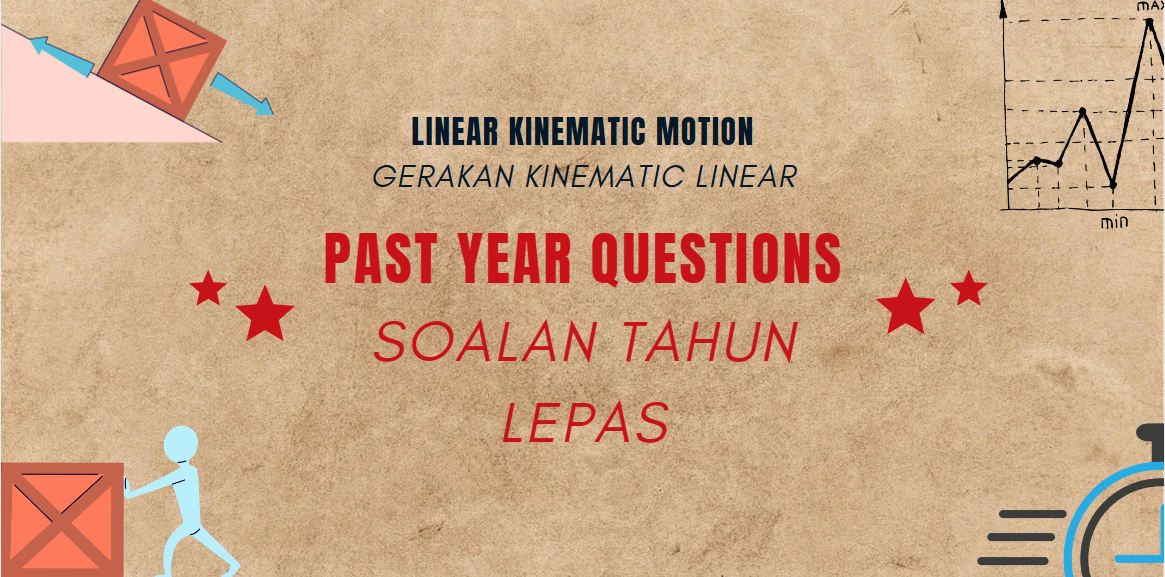
Introduction
[b][size=150][size=200][color=#0000ff]What is Linear Kinematic Motion?[/color][/size][/size][/b][size=100][justify][size=150]Linear kinematic motion refers to the study of the [i]movement of objects along a straight line[/i], describing how their position, velocity, and acceleration change over time. This concept is fundamental in understanding motion in physics and is widely applied in various real-world situations, such as driving a car, objects falling freely under gravity, or the motion of projectiles.[/size][br][br][size=150][/size][size=150]Kinematics focuses on describing the motion of an object without considering the forces that cause it. In linear motion, we are particularly interested in how the following quantities interact:[br][/size][/justify][list=1][*][size=200][size=150][b][i]Displacement (s):[/i][/b] The distance and direction of an object's movement from its initial position.[/size][/size][/*][*][size=200][size=150][b][i]Velocity (v):[/i][/b] The speed of the object in a specific direction. It can be initial velocity (u) or final velocity (v).[/size][/size][/*][*][size=200][size=150][b][i]Acceleration (a):[/i][/b] The rate at which the velocity changes over time.[/size][/size][/*][*][size=200][size=150][b][i]Time (t):[/i][/b] The duration of the motion.[br][/size][/size][/*][/list][/size]

8.1 Displacement, Velocity, and Acceleration as Functions of Time

[size=200][b][color=#0000ff]What is displacement?[br][/color][/b][/size][br][size=150][b]Displacement (s)[/b] of a particle and a fixed point is the distance between the particle and the nearest fixed point measured in a certain direction.[br][/size][i][color=#1e84cc][size=150][b]Here is a simpler and easier to understand way to explain the displacement, velocity and acceleration based on the direction of motion of the particle relative to the fixed point O: [/b][/size][/color][/i][size=150][color=#ff0000][b]Displacement:[/b][br][/color][/size][size=150][list][*][size=150][b]Negative displacement[b] (s<0)[/b]: The particle is to the left of point O.[/b][/size][/*][/list][list][*][size=150][b]Zero displacement[b] (s=0): The particle is exactly at point O.[/b][/b][/size][/*][/list][list][*][size=150][b]Positive displacement (s>0): The particle is to the right of point O.[/b][br][/size][/*][/list][/size][justify][color=#ff0000][b][/b][size=150][b]Velocity:[/b][br][/size][/color][/justify][size=150][i][list][*][size=150][b]Negative velocity[b] (v<0)[/b]: The particle moves to the left.[/b][/size][/*][/list][list][*][size=150][b]Zero [b]velocity [/b][b](v=0): The particle remain still.[/b][/b][/size][/*][/list][list][*][size=150][b]Positive velocity (v>0): [b]The particle moves to the right.[/b][/b][br][/size][/*][/list][/i][/size][size=150][color=#ff0000][b]Acceleration:[/b][/color][/size][i][list][*][b][size=150]Negative acceleration[b] (a<0)[/b]: The particle's velocity is [b]increasing[/b] over time (the particle is speeding up).[/size][/b][/*][/list][size=150][list][*][b]Zero [b]acceleration[/b][b](v=0): The particle's velocity is [b]constant[/b] (either at its maximum or minimum).[/b][/b][/*][/list][/size][/i][i][size=150][list][*][i][size=150][b]Positive acceleration[b] (a>0)[/b]: The particle's velocity is [b]decreasing[/b] over time (the particle is slowing down). [/b][/size][/i][/*][/list][/size][/i]
8.2 Differentiation in Kinematics of Linear Motion
[justify][size=100]Differentiation in linear kinetic motion refers to the mathematical process of determining the rate of change of motion-related quantities, such as displacement, velocity, and acceleration, with respect to time. These rates are foundational in understanding the dynamics of objects in linear motion.[b] The differentiation always starts from displacement, s=f(x). [br][/b][/size][i][size=100][br][/size][/i]The [b]velocity[/b] is defined as [b]the rate of change of displacement with respect to time[/b]. Hence, the velocity function,v is given by:[br][/justify][center][br][math]v=\frac{ds}{dt}[/math][br][br][/center][justify][size=100]The[b] acceleration[/b] is [b]the rate of change of velocity with respect to time[/b]. Hence, the acceleration function,a is given by:[br][br][/size][/justify][i][center][math]a=\frac{dv}{dt}=\frac{d^2s}{dt^2}[/math][/center][/i][justify][br]The relationship between the displacement function, s, the velocity function, v, and the acceleration function, a, can be summarized as shown in the following diagram:[/justify]

8.3 INTEGRATION IN KINEMATICS OF LINEAR MOTION
[justify]You had learnt the acceleration function, a of a particle that moves linearly can be obtained by differentiating the velocity function, v with respect to time. t, that is:[br] [math]a=\frac{dv}{dt}[/math][br][br]However, if the acceleration function, a, of a particle is given, how can we determine the velocity function,v of the particle?[br][br]When the acceleration function [math]a=\frac{dv}{dt}[/math], the velocity function, v can be determined by integrating the acceleration function, a with respect to time, t which is [math]v=\int a[/math]dt.[i][br][br][/i]In general, the relationship between acceleration function, a = h(t) and velocity function, v = g(t) can be simplified as follows:[br][/justify] [math]a=h\left(t\right)[/math] [math]\longrightarrow[/math] [math]v=\int adt[/math] [math]\longrightarrow[/math] [math]v=g\left(t\right)[/math]
[left]Given a velocity function, v, how can we determine the displacement, s, of the particle? How can we determine the velocity function, v, and alsoy the displacement function, s, of a particle from an acceleration function, a?[br][br]When the velocity function, v, is given as a function of time t, the displacement function, s, can be obtained by performing integration, which is:[br][br][br][b]s=∫ v dt[/b][br][br]and when the acceleration function, a, is given as a function of time t, the displacement function, s, can be obtained by performing two consecutive integrations, which are:[br][math]v=\int adt[/math], then follow by [math]s=\int vdt[/math][/left]

8.4 Application of Kinematics in Linear Motion
Solve linear motion kinematics problems involving differentiation and integration
We have learned that the relationship between displacement, [math]s[/math], velocity, [math]v[/math] and acceleration [math]a[/math], for an object moving linearly, is as follows.[br][br]Using differentiation[br][math]v=\frac{ds}{dt},a=\frac{dv}{dt}[/math][br][br]Using integration[br][math]v=\int a_{ }dt,s=\int v_{ }dt[/math][br][br]Many problems involving an object's linear motion can be solved with the knowledge and skills to apply this relationship.

Question 1
A particle moves along a straight line from a fixed point O. Its displacement, s metre, at t seconds after passing O is given by [math]s=2t^3-24t^2+90t[/math]. Calculate[br]
(a) the distance, in m, of the particle from the fixed point O when t=8,
(b) its velocity, in ms[sup]-1[/sup], when t=1,
(c) its acceleration, in ms[sup]-2[/sup], when t=3,
(d) the values of t, in seconds, when the particle stops momentarily.
2020 Penang

[size=150]A particle P moves along a straight line and passes through a fixed point [i]O. [/i]Its velocity, [i]v[/i] ms[sup]-1[/sup], is given by [math]v=8+2t-t^2[/math], where [i]t[/i] is the time, in seconds, after passing through [i]O.[br][Assume motion is to the right is positive.][/i][/size][br][size=150]Find[br][br](a) the initial velocity, in ms[sup]-1[/sup], of the particle,[/size]
[size=150](b) the maximum velocity, in ms[sup]-1[/sup], of the particle.[br][/size]
[size=150](c) the value of [i]t[/i] at which the particle [i]P[/i] is at instantaneous rest,[/size]
[size=150](d) the total distance, in m, travelled by particle [i]P[/i] in the first 6 seconds after passing through [i]O.[br][/i][/size]
